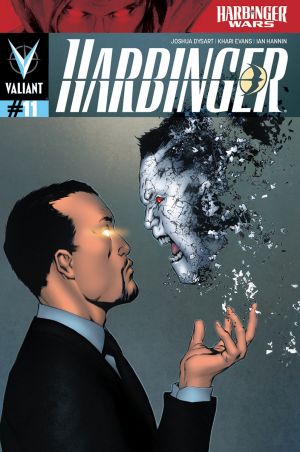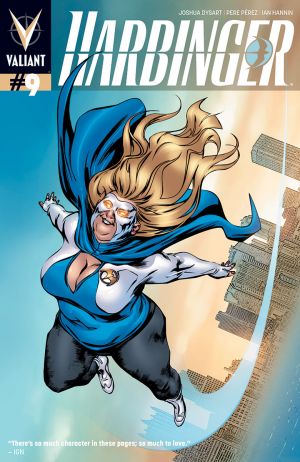Harbinger – The Philosophical Second Skin
By Hervé St-Louis
July 18, 2013 - 09:15
 |
I had read the first issues of Valiant Entertainment’s newer version of Harbinger, but not the whole series. Reading two collected editions this week gave me a new appreciation for a comic book series that although borrows from the past has its own discourse. I was struck with how the concept of the second skin played an important role in the lives of the character. In the traditional level the young protagonists wear a few costumes from the Harbinger Corporation both to fit in and defy their enemies. When Peter Stanchek, the young leader of the rebel heroes dons the traditional Harbinger suit given to him by Harbinger staff, the corporation’s evil leader, Toyo Harada comments on how it looks good on him. This suit is also a signifier of his rank within the Harbinger community. The colour denotes where he ranks.
Yet, another Harbinger, whose powers Stanchek activates – Zephyr originally crafts her own super heroine suit only to steal a few from the Harbinger Corporation. She comments on how they are more stylish than her original homemade suit. Donning the Harbinger suit, even as a rebel Harbinger, Zephyr transforms into a more courageous heroine and saves her friends from captivity. The super hero costume, whether it is her home-made one or the nifty one stolen from Harbinger, for Zephyr is part of her identity as a heroine. It helps defines her through a second skin.
However, the second skin is literally explored with the character of Flamingo, a pole dancer who is abused by her pimp-like boyfriend. As Stanchek activates her powers, Flamingo burns through her old skin which did not resist the activation of her fire-based powers to reveal another skin underneath where her inhibition and fiery personality are no longer held back by an abusive partner. This second skin is impervious to her fire powers and thus does not burn off.
 |
Non-powered human girl Kris Hathaway was originally tricked into loving Peter Stanchek by the latter. Once he stopped controlling her mind, Kris, grudgingly decided to join Stanchek anyway to actually lead the team from behind. While Stanchek has all the powers, Kris has the brains. Here Hathaway’s skin is more symbolic than all the other members of her team. She hides behind them, using them as her cover to better lead them. The most fragile and weaker of them, her mind is sheltered behind the powers of her teammates. That is her second skin.
Toyo Harada, the villainous leader of the Harbinger Corporation chasing the young rebels also uses the cover of a second skin to mask his real intent. Figuratively, he has built a Google-like corporation to finance his activities, using his own powers to manipulate the world. But to the public, Harada is an old man. His actual powers have kept him younger and healthier than is projected to the world. While Stanchek and his teammates use second skins to protect themselves and express part of their being, Harada uses his second skin for malevolent reasons.
It will be interesting to see where the Harbinger reboot from Valiant Entertainment goes in the future and if similar second level themes can be read from the comic book series. As the second incarnation and thus, the second skin of the Harbinger series, the current version of this comic has more depth and is less focused on the straight action and mutant-like situations of the first series. It’s already digging deeper in the literary world.
Related Articles:
Review: Harbinger Omegas #1
Harbinger: Bleeding Monk #0 Review
"Perfect Day" Darkens in HARBINGER #16
First LooK: Harbinger #15
Harbinger – The Philosophical Second Skin
Harbinger Wars Finale Arrives in Harbinger #14 and Bloodshot #13
First Look: Harbinger Wars #4 Decides the Battle of Las Vegas!
Bloodshot #12 Reaps Revenge on Harbinger Wars!
Free Comic Book Day 2013: Valiant Comics' Harbinger Wars Special
Harbinger Wars: Battle For Las Vegas Hits iOS and Android for Free on May 2nd!
